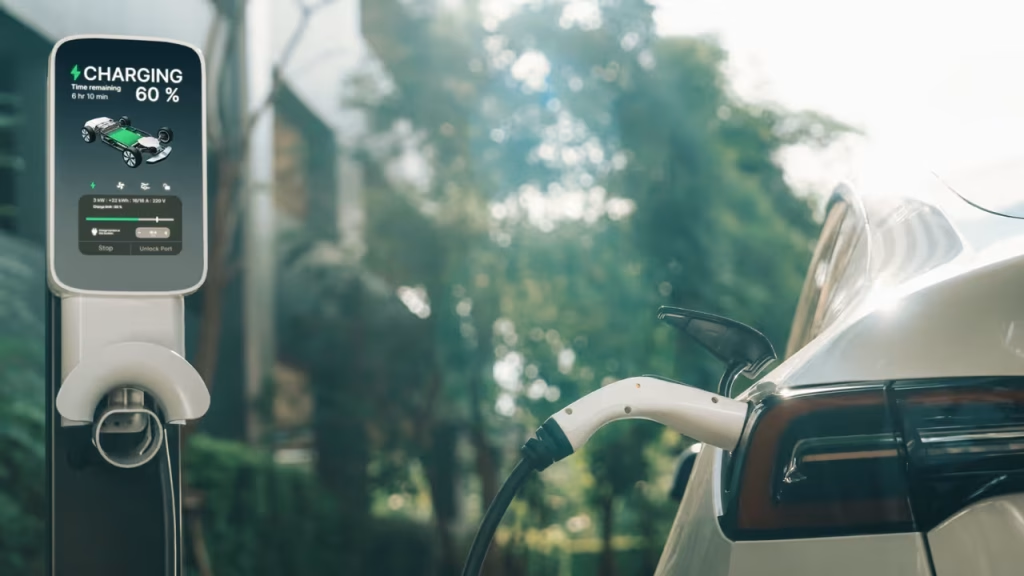the evolution of ev charging
Electric vehicles (EVs) are no longer just a trend; they’re becoming a way of life. As more people embrace this shift, the demand for efficient and accessible EV charging solutions grows. It’s intriguing to think about how far we’ve come—from gas stations on every corner to charging stations popping up in unexpected places. Have you ever considered what this means for our daily routines?
the different types of ev chargers
Understanding EV charging starts with knowing the types of chargers available. There are three main levels:
- Level 1: This is the slowest option, using a standard household outlet. Great for overnight charging at home, but it can take ages to fully charge your vehicle.
- Level 2: These chargers are often found in public places and can recharge your EV in a few hours. This is where the magic really starts to happen.
- DC fast charging: The speedy superhero of the charging world. These stations can provide an 80% charge in about 30 minutes. Perfect for road trips or when you’re in a hurry.
where to charge
As an EV owner, one of your biggest concerns is likely where to charge your vehicle. While home charging is ideal, not everyone has that luxury. Public charging stations are popping up everywhere, from shopping malls to grocery store parking lots. But the availability varies, and not all stations are created equal. Some are constantly occupied, while others sit idle. It makes you wonder—are we really prepared for this electric revolution?
the challenge of charging infrastructure
Let’s get real: the infrastructure struggles to keep pace with the growing number of EVs on the road. You might find yourself circling a parking lot looking for an available charger, only to discover the station is out of order. It’s frustrating! We need more reliable and widespread charging options. Cities need to invest in expanding their networks to make owning an EV a seamless experience.
the future of ev charging
We’re on the brink of something exciting. Innovations are emerging that promise to make charging faster and more accessible. For instance, wireless charging is gaining traction. Imagine pulling into your driveway, and your car starts charging without you having to plug it in. Sounds dreamy, right? But let’s not get ahead of ourselves; we’re still in the early stages.
charging at home
Home charging is where the real convenience lies. If you have a garage, installing a Level 2 charger can make your life so much easier. You wake up to a fully charged vehicle every morning. It’s like having a personal gas station right at your doorstep. But here’s a thought: what if you live in an apartment? Many multi-family units still lack adequate charging solutions. That’s a huge barrier for potential EV owners.
the cost of charging
Let’s talk money. Charging at home can be cost-effective, often cheaper than filling up a gas tank. But how does that stack up against public charging stations? Depending on the location, you might pay a premium, especially at fast chargers. It’s a mixed bag that leaves many wondering if they’re truly saving money with an EV.
the social aspect of ev charging
Charging isn’t just about electricity; it’s also about community. Many EV owners share tips about the best charging spots or even organize local meet-ups. There’s a camaraderie that comes with being part of this movement. Have you ever chatted with a fellow EV driver while waiting for your car to charge? It’s a unique experience that you just don’t get at a gas station.
the environmental impact
From an environmental standpoint, EVs are a game changer. They produce no tailpipe emissions, which is fantastic for air quality. However, the reality is that the electricity used to charge them often comes from non-renewable sources. So, while you’re doing your part by driving electric, it’s essential to think about where that energy is coming from. Are we just shifting the problem instead of solving it?
As we move forward, the conversation around EV charging will only get more interesting. We’re witnessing a shift that’s not just about transportation but also about how we think about energy consumption and infrastructure. It’s a fascinating time to be part of this electric journey, don’t you think?


